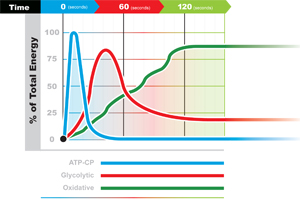The sixth and final performance tip.
That went fast. Hopefully you’ve learnt a thing or two over the past 90 odd days while I’ve been overseas exploring the European continent. For me, personally, I really can’t believe that I’ll be landing back in Australia so soon after being away from the routine life for so long.
But, enough of the small talk. We’ve got our breathing, foam rolling, mobility drills and a few top exercises out of the way. Now I want to finish this small hexalogy (yep, you just learned the “trilogy” word for six. You’re welcome.) with one more cool last tip that you can implement into your training with the utter most simplicity.
SPRINTING
You might be thinking, “yeah that’s all well and good Hayden, but I’m not Usain Bolt”, and you’d be right. But that doesn’t mean you can’t work in and around your own sprint ability threshold. Especially when there is absolutely no doubt about sprinting being a great skill to perform, and one that can be performed by almost anyone. Sounds cool, right? Well, I’m only just beginning.
Another cool thing about sprinting is the fact that you don’t actually need that much equipment to perform them – or even any at all, for that matter, and that they can practically be performed anywhere and on virtually every piece of equipment.
Still not convinced about this whole sprinting thing? Good, I’m glad you’re not.
MORE WHY’S
So, what makes sprinting so beneficial to perform? I’m glad you asked. You didn’t? Well, carry on then and skip to the next sub-heading. For those that in fact were asking that, let’s continue on.
There really are so many benefits to sprinting that you can find highly suited to your intentions and goals in training and even in life. (It just keeps getting better, doesn’t it?)
I could fill some hefty paragraphs with the information as to what benefits exist in the world of sprinting, but rather than forcing your eyes to work overtime upon this backlit device you are reading this article from, how ’bout I put down some good ol’ fashioned dot points instead?
• Due to blood flow demand when spiking and dropping your heart rate so often, an increase in your maximum heart rate will become apparent overtime, resulting in a much stronger heart.
• An improvement in how much lactic acid your body can deal with, naming all future tasks more bearable due to a higher lactic threshold.
• A large improvement in your cardiovascular fitness resulting in an increase in how much oxygen you can inhale at one time.
• Due to the demand upon your muscles in the shorter periods of time, it can have the same effects as lifting weights, resulting in a spike in metabolism for hours following your workout. Making burning calories while you sit on the couch an easy feat to accomplish.
• Builds muscles (if nutrition is good, of course) and power.
• And of course, due to it’s short and intense style of training, they can make for a great short workout providing you with more time to spend with your loved ones. (Awww.)
Okay cool, now that we’ve got that out of the way, let’s get into how you can implement a form of sprinting into your training right away.
LET’S BEGIN
I really find one of the biggest misconceptions with sprinting is that people think that going till they’re passing out, fatiguing or throwing up last night’s bangers and mash, is a sign of a great workout.
Statements like “yup, they made me do a 1k sprint on the rower – I pretty much died”, or “he made me do bike sprints until I threw up – it was awesome!”, are what I’m talking about.

There’s certainly no way that from a logical perspective that THAT is a sign of an optimal program. Not to mention that when performing sprints, there’s no way someone is capable of actually ‘sprinting’ for a kilometre leg anyway.
You see, when it comes to sprinting and getting the most out of it, the key is to only go until your performance either dies or starts to dwindle.
So, let’s say you’re performing 100m dashes at your fastest effort level (i.e. a sprint). Your first run you pull an 11.5 second time. Your second effort, an 11.2. Your third, an 11.1. And your fourth, an 11.6. You decide to go for one more and get a measly 12.6 seconds. Slightly annoyed at your performance, you give it one more go. This time, a terrible 13.4 seconds is displayed on your watch.
This, ladies and gentlemen, is the sign that you’re no longer improving your time (obviously). And it means only two things: you may need to cut the sprint session, or, increase the rest time in between your bouts. Simple enough, right?
NO PROBLEMA
Since our sprint system (ATP-CP) loves to work in and around the 0-12 (possibly even 15 or so) second window, we want to try and aim to shoot for around that period of time for each effort. The fact that our sprint system likes to take around 2-5 minutes (depending on ability) is also something to watch, and we want to make sure we rest for enough time to allow our body to replenish what it needs for our next effort in between bouts.
If you wear a heart rate monitor, it makes it a helluva lot easier to gauge how recovered you are after each effort. If not, you can always opt to palpate your standard heart rate checking zones – wrist or carotid artery on your neck – and count the number of beats in a minute. (Or 30 seconds and double it.)

And when you know your resting heart rate, maximum heart rate (207 minus 0.67 multiplied by your age, being one particular formula anyway) and the certain percentages of effort for each sprint, it makes it even more easier to gauge what you’re accomplishing in each workout.
But, what percentage should you be aiming for, you ask? Great question.
PERCENTAGES
There are so many options when it comes to this. And they can vary so much depending on factors like what type of sprinting you’re doing, if you’re just looking to get a quick workout in, or even whether you’re an Olympian and you have to cycle your training with off-season and on-season training. I will assume that you aren’t an Olympian (forgive me if I’m wrong), so let me lay down an average plan to try out/play around with.
Let’s say your intention is to get seven sprint efforts done, but of course, due to reading the above, you know that you will cut the workout short if your performance starts to die. Right? Excellent.
After your warm up beginning with your foam rolling and mobility drills that you now know from my other performance tips, you initiate your sprints with a build up before reaching some maximum effort bouts.
1. 60-70% of your maximum heart rate (MHR)
2. 60-70% MHR
3. 70-80% MHR
4. 80% MHR
5. 80-85% MHR
6. 85-90% MHR
7. 90-95% MHR
8**. 90-95% MHR
** Bonus one if results are still high.
SAMPLE PROGRAM
So now that you know a fair few things about sprinting. Let’s give you a simple 12-week sprint program that you can play around with and adjust and tweak with the above information to suit your style.
Note: you can opt for any form of exercise that allows you to perform at a high intensity – ideally, running. I just decided to go with the rower as it is a much safer and simpler form of cardio for people with injuries/low run technique ability/hatred for running.
Weeks 1-4
Row as fast as possible (AFAP) for 10 seconds and record the amount of metres you obtain in that period.
Wait until your heart rate drops back down to below 120bpm (or 2+ minutes) then repeat aiming to beat your previous metre score.
Repeat until your ‘metre score’ starts to drop off, you fatigue, or realise you’re going to be late to pick the kid’s up from school. Et cetera.
Weeks 5-8
Working out the average of the metre scores you obtained from the previous month, you can now round up to the nearest ten (eg. average 92 metres for 10 seconds rowing effort, round to 100 metres).
You will now perform that amount of metres in as short time as possible.
Again, record your time scores, and allow yourself enough recovery time in between bouts.
Weeks 9-12
Now following on from your previous months’ time scores, after working out the average, round down to the nearest five or ten second amount (eg. average time score is 12.33 seconds for 100m on the rower, round to 12.5 seconds).
This time will be your new sprint time goal for this month.
Don’t forget to record your metre scores and allow yourself enough recovery.
FIN
The above 12-week simple sprint program can work well for numerous amounts of cycles. But always remember that you should be aiming to IMPROVE in the sprint times and metres, and NOT chasing fatigue.
One more thing before I leave you to like and share this article to your Facebook: whilst I am a fan of sprinting, I’m definitely not a hater for long distance cardio. A lot of people think that sprinting is a magical form of exercise that can burn infinite amounts of calories. But the fact of the matter is, both can provide the same benefits if programmed properly. But, perhaps I’ll save that debate for another time. Maybe even Performance Tip #7 someday. We’ll see.
Until next time, give the above a go and drop any Q’s below.
Performance Tip #1
Performance Tip #2
Performance Tip #3
Performance Tip #4
Performance Tip #5




